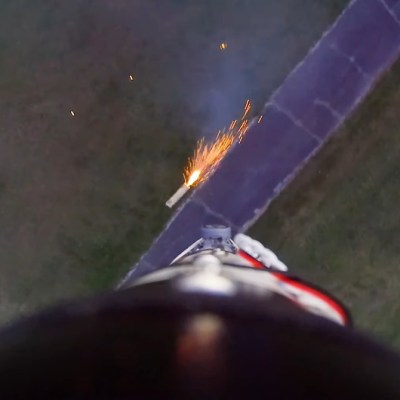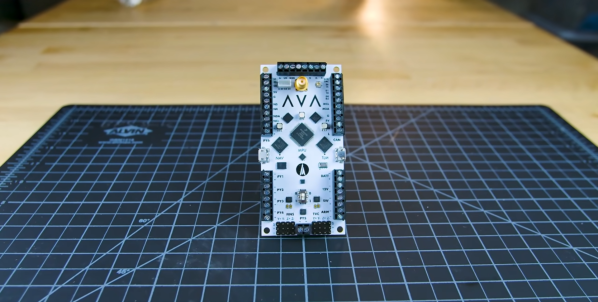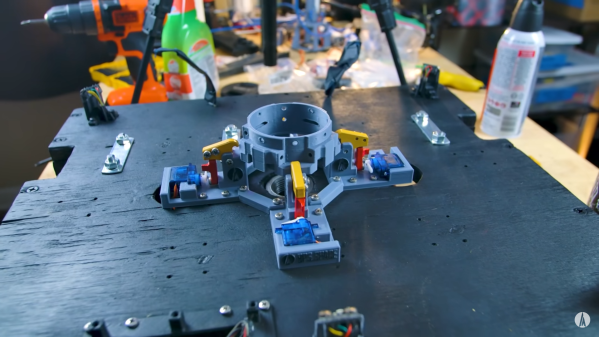The small size of action cameras has made them a great solution for getting high-quality experimental footage where other cameras don’t fit. GoPros are [Joe Barnard]’s camera of choice for his increasingly advanced rockets, but even the smallest models don’t quite fit where he needs them. They also overheat quickly, so in the video after the break, he demonstrates how he strips and customizes them to fit his required form factor.
[Joe] starts out with a GoPro HERO10 Bones, which is a minimalist version intended for FPV drones. He likes the quality of the 4K 120 FPS video and the fact that he can update the settings by simply holding up a QR code in front of the camera. The case appears to be ultrasonically welded, so careful work with a Dremel is required to get it open. The reveals the control board with an aluminum heat sink plate, and the sensor module on a short ribbon cable. For minimal drag[Joe] wants just the lens to poke out through the side of the rocket, so he uses slightly longer aftermarket ribbon cables to make this easier.
The camera’s original cooling design, optimized for drone airflow, meant the device would overheat within 5 minutes when stationary. To increase the run time without the need for an external heat sink, [Joe] opts to increase the thermal mass by adding thick aluminum to the existing cooling plate with a large amount of thermal paste. In an attempt to increase heat transfer from the PCB, he also covers the entire PCB with a thick layer of thermal paste. Many of the video’s commenters pointed out that this may hurt more than it helps because the thermal paste is really intended to be used as a thin layer to increase the contact surface to a heat sink. It’s possible that [Joe] might get better results with just a form-fitting thermal block and minimal thermal paste.
[Joe] is permanently epoxying three of these modified cameras into his latest rocket, which is intended to fly at Mach 3, and touch space. This may look like a waste of three relatively expensive cameras, but it’s just a drop in the bucket of a very expensive rocket build.
We’ve seen GoPros get (ab)used in plenty of creative ways, including getting shot from a giant slingshot, and reaching the edge of space on a rocket and a balloon.
Continue reading “Stripping GoPros To The Bone For Model Rocketry”






















